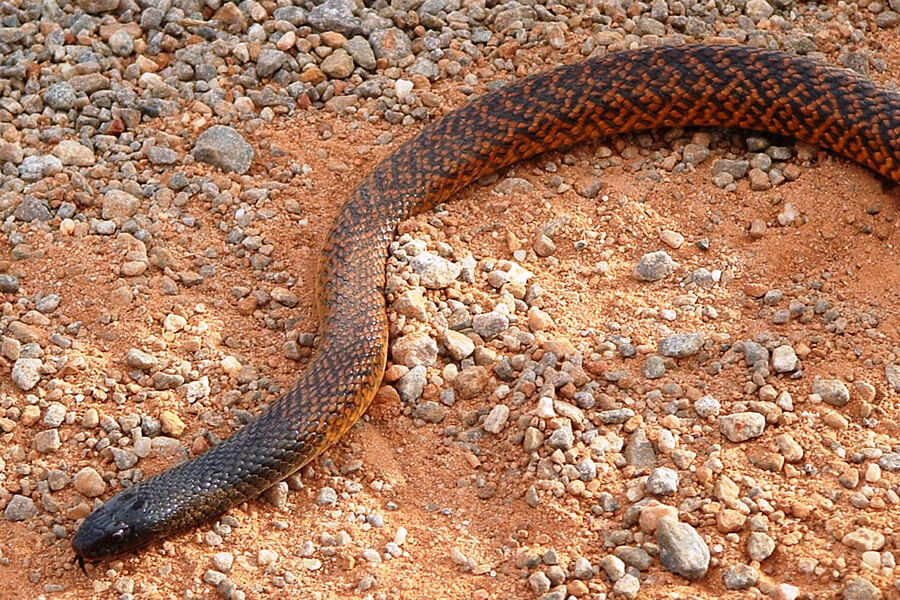Introduction
Tiger snakes (Notechis scutatus) are among one of the most remarkable yet feared reptiles found in Australia. With their striking look and powerful poison, these serpents evoke a mix of admiration and caution. Observing tiger serpents in their natural environment can be an exciting experience for nature fanatics, wild animals photographers, and researchers alike. Nevertheless, it's crucial to approach this venture with regard for the pet's environment and an understanding of precaution to stop snake bites.
In this thorough overview, we'll explore how to safely observe tiger snakes in their natural environment. We will cover subjects ranging from comprehending their behavior and environments to emergency treatment for snake bites-- furnishing you with understanding to boost your experience while reducing threats.
What is a Tiger Snake?
Tiger snakes are highly venomous snakes native to Australia, specifically Tasmania and seaside areas. They are understood for their unique grouped pigmentation resembling a tiger's red stripes, which can vary from yellowish-brown to dark brownish or perhaps black.
Physical Characteristics
Tiger serpents are tool to large-sized snakes that can grow up to 2 meters long. Their bodies are durable, and they Australian snake facts have a wide head that is noticeably larger than their necks.
Habitat Preferences of Tiger Snakes
These reptiles typically inhabit Pressure immobilisation method marshes, estuaries, and seaside areas but can likewise be found near freshwater resources like rivers and lakes. Understanding where these serpents live is critical for anyone seeking to observe them safely.

Understanding Tiger Serpent Behavior
Are Tiger Snakes Venomous?
Yes, tiger serpents are amongst one of the most venomous serpent species internationally. Their venom consists of neurotoxins that can bring about severe medical issues if bitten.
Behavioral Traits
Tiger serpents are normally reluctant animals; they choose to avoid human interaction. Nevertheless, they can end up being aggressive if endangered or cornered.
Where Can You Discover Tiger Snakes?
Tiger Snake Environment Exploration
To safely observe tiger snakes in their natural environment, it's important initially to determine where they flourish. They have a tendency to prefer:
- Coastal marshlands Mangroves Swamps Riverbanks
Best Areas for Observation
Some recommended areas consist of:
- Tasmanian wetlands The coasts of southerly Australia National parks with water bodies
Safety Precautions Before Observing Tiger Snakes
Understanding the Threats of a Tiger Snake Bite
Although experiences with tiger serpents can be awesome, knowing the dangers included is extremely important:
Recognize signs of a snake bite: swelling at the website, pain radiating from the bite area. Know emergency situation contacts: Acquaint yourself with local emergency situation services. Carry a first-aid set specifically furnished for serpent bites.First Aid for Snake Bites: What You Need to Know
Knowing what steps to take if bitten might save your life or somebody else's:
- Stay calmness; movement boosts poison spread. Call for clinical aid immediately. Do not apply ice or effort suctioning.
How to Securely Observe Tiger Snakes in Their All-natural Habitat
When you determine to observe tiger snakes in the wild:
Dress Appropriately: Put on lengthy trousers and sturdy boots. Use Binoculars: Maintain a safe distance while observing these reptiles. Avoid Sudden Movements: Quick motions might stun them. Stay on Developed Trails: Stay clear of wandering right into dense underbrush where exposure is low.Equipment Needed for Observation
Essential Equipment Checklist
- Binoculars First-aid kit specifically designed for serpent bites Field manual on Australian reptiles Camera (with zoom ability)
Snake Bite First Aid Package Essentials
A well-equipped first aid package ought to include:|Item|Objective|| -------------------------------|-------------------------------|| Compression bandage|To immobilize the afflicted location|| Antihistamines|For allergies|| Emergency contact numbers|Quick accessibility during emergency situations|
Interpreting Tiger Snake Signals
Understanding exactly how tiger snakes communicate through body movement assists onlookers evaluate when it's secure or dangerous:
Common Behaviors
Defensive position: If coiled or raised off the ground. Retreating behavior: When they slowly back away from potential threats.Dealing With Prospective Encounters
Even with safety measures taken, an encounter might still take place during your monitoring trip:
Remain calmness; panicking only enhances risks. Slowly back away without turning your back on the snake. Make your existence known verbally yet avoid abrupt movements.Frequently Asked Inquiries Concerning Tiger Snakes
1. What need to I do if I see a tiger snake?
Remain tranquility; observe from a range without disturbing it.
2. Are baby tiger snakes dangerous?
Yes, adolescent tiger serpents are birthed poisonous and may posture threats similar to adults despite being smaller.
3. Exactly how typical are tiger serpent bites?
While cases happen annually in Australia, deaths are rare because of timely treatment availability.
4. Can I keep a tiger snake as a pet?
Keeping wild tiger snakes as animals is unlawful in many regions because of conservation laws.

5. What does a tiger serpent bite look like?
Bite marks usually show two puncture injuries in addition to local swelling and discoloration.
6. How reliable is antivenom?
Antivenom treatment is extremely effective when provided prompt after a bite.

Conclusion
Fierce Snake (Notechis species)Observing tiger serpents in their natural environment supplies an electrifying chance for wild animals enthusiasts but have to be approached with care and respect for both the animal and its atmosphere. By equipping yourself with knowledge about these remarkable reptiles-- consisting of comprehending their habits and safety measures-- you can enjoy unforgettable experiences while considerably reducing threats related to encounters.
In recap, constantly prioritize safety by preparing adequately prior to embarking on any kind of wildlife monitoring expedition-- particularly when managing several of nature's most venomous creatures like the tiger snake!